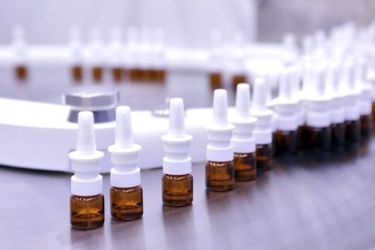Whitepaper: In Vivo Testing Of Nasal Dosage Forms

Nasal drug delivery has garnered increasing attention in recent years, offering several compelling advantages over traditional administration routes. Its potential for rapid systemic absorption, stimulation of localized mucosal immunity, and the unique ability to enable direct nose-to-brain transport—effectively bypassing the blood-brain barrier—positions it as a powerful, non-invasive alternative to injectable medications. This interest has been further fueled by recent FDA approvals of groundbreaking intranasal products such as BAQSIMI® (glucagon), NEFFY® (epinephrine spray), and NARCAN® (naloxone spray), all of which highlight the clinical viability and patient-friendly nature of this approach.
Developing effective nasal dosage forms, however, requires more than just innovative formulation. It involves meticulous in vivo testing to evaluate pharmacological efficacy, safety, and delivery performance. Liquid formulations are typically easier to develop, but dry powder options are often preferred for biologics, poorly soluble compounds, and enhanced stability. Tools such as the UpperNose™ Development Platform play a critical role in formulation design and delivery assessment, using nasal cast models like the Alberta Idealized Nasal Inlet to replicate human anatomy.
Animal models are essential at various stages of development—small animals like mice, rats, and guinea pigs are used for initial studies, while larger species such as dogs, rabbits, and monkeys are employed for pharmacokinetic and toxicological evaluations. Biodistribution studies, utilizing radiolabels, fluorescent markers, or advanced analytical techniques, help track drug localization and reach, especially for unlabelled compounds. These studies also help characterize nasal absorption and highlight species-specific anatomical differences that can affect translational relevance.
Safety and toxicology assessments remain a regulatory requirement, particularly for new formulations, to ensure both systemic and local nasal safety before entering human trials. While repurposed drugs may benefit from streamlined preclinical testing, new chemical entities (NCEs) must undergo comprehensive toxicity evaluations.
Overall, nasal drug delivery presents an exciting frontier for drug developers, offering faster-acting, more accessible therapeutic solutions across a wide range of disease areas. With the right combination of formulation science, preclinical rigor, and regulatory strategy, intranasal products have the potential to transform the standard of care in multiple therapeutic categories.
Get unlimited access to:
Enter your credentials below to log in. Not yet a member of Outsourced Pharma? Subscribe today.
